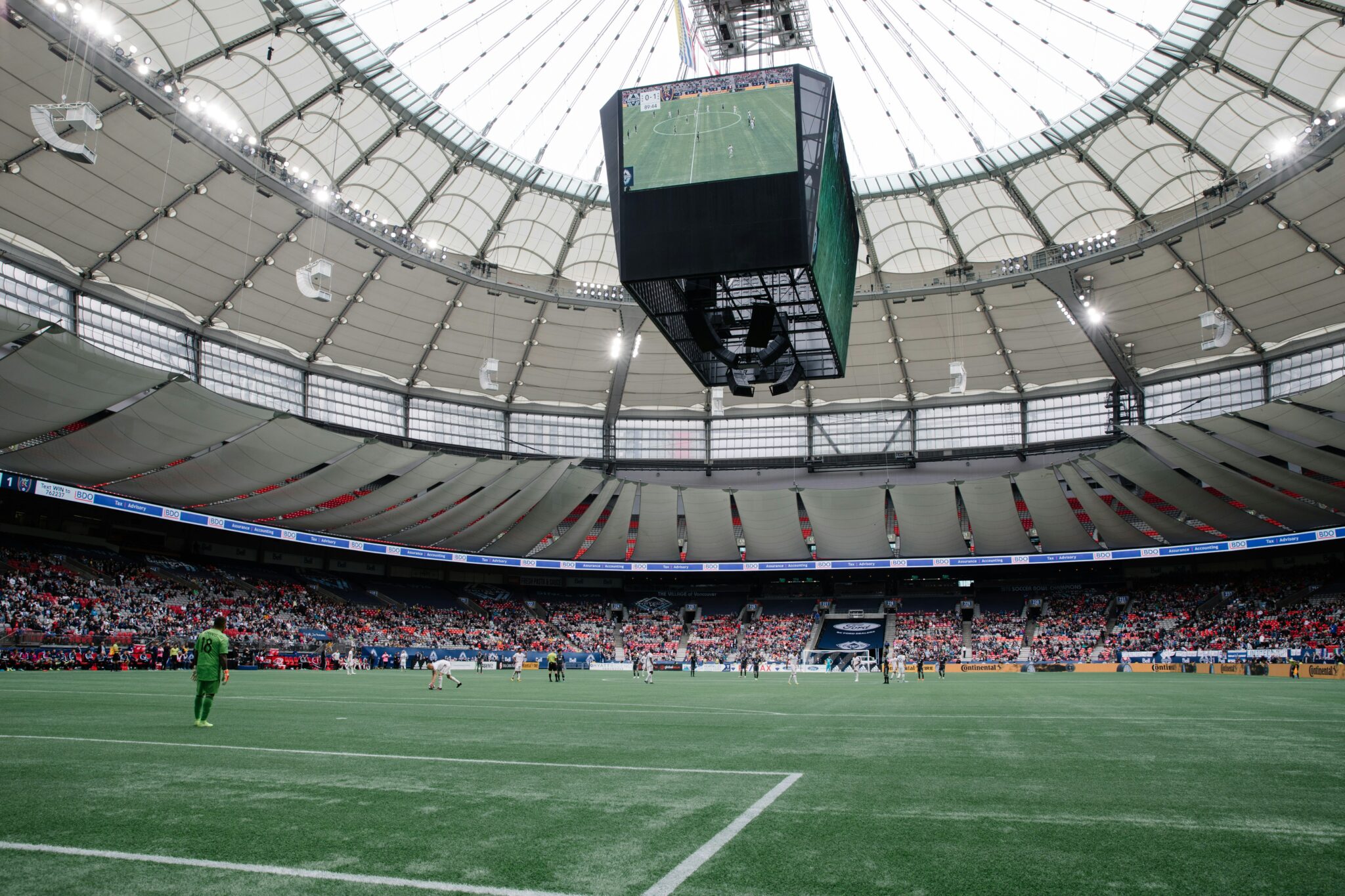
Dr. David Doorey is an Associate Professor of Labor and Employment Law at York University in Toronto.
This is part one of a two-part series. See part two here.
In February, after a proposed collective agreement was rejected by members of the Professional Soccer Referees Association (PSRA), Major League Soccer (MLS) referees were locked out. When the MLS season began, the games were officiated by non-union “scab” referees. All of this was perfectly lawful under the National Labor Relations Act (NLRA), but almost certainly illegal in three Canadian provinces that are home to MLS franchises in Vancouver, Montreal, and Toronto.
This is not the first time that the legal rights of Canadian-based professional athletes have been sacrificed on the altar of transnational professional sports collective bargaining. The parties have often just presumed that the NLRA governs sports labor relations, effectively overriding Canadian laws. This approach is not outcome neutral; ignoring Canadian labor law in favor of the NLRA model typically favors employers. This explains why transnational pro sports unions have occasionally used the threat of Canadian labor law as a bargaining tactic, with mixed results.
North American pro sports provide a fascinating but complicated example of transnational collective bargaining between employer associations (representing various teams/franchises in the leagues) and transnational unions representing athletes in the U.S. and Canada. The presumptive application of the NLRA may be explained by the fact that, with the exception of the National Hockey League, collective bargaining in the major sports leagues dates from periods before there were Canadian teams.
However, the arrival of Canadian franchises in Major League Baseball, the National Basketball Association, and pro soccer (now MLS) muddied the labor law waters. Players employed by Canadian-based teams or leagues and officials assigned to referee games in Canada are governed by Canadian labor laws. This legal reality raises important threshold labor law questions when it comes to transnational sports leagues, including how to develop a collective bargaining structure that satisfies the legal regimes of both countries.
The most legally straightforward solution to the cross-border challenge of pro sports is to certify separate bargaining units in the U.S. and Canada, applying each countries’ labor laws, and to then bargain collectively through transnational union and employer associations. The process could produce separate collective agreements for each jurisdiction, although in practice those agreements could be mirror reflections of one another (except insofar as national laws require differences).
This approach was attempted in the now defunct North American Soccer League (NASL) after the NLRB certified a bargaining unit represented by the NASL Players’ Association (NASLPA) in 1978 consisting of all players employed by U.S. based teams, but not Canadian teams. The NLRB ruled that “our exercise of jurisdiction is not so broad as to include the soccer teams located in Canada.” That certification initiated a years’ long litigation strategy by the NASL challenging the NLRB’s ruling. The NASL argued that each team should be treated as a separate bargaining unit.
The NASLPA sought to use more favorable Canadian labor laws as leverage to encourage the NASL to commence bargaining. The NASLPA’s president explained in 1979: “Right now, we plan to pursue the fight for recognition in Canada, where the labor laws are more effective. Perhaps Canada can set a pattern for everyone else.” Players on NASL teams in Toronto, Vancouver and Edmonton signed NASLPA union cards and applied for certification before the provincial labor boards. The Ontario Labour Relations Board (OLRB), in a pattern that it would follow in subsequent sports cases, acknowledged that potential difficulties could arise regarding cross-border bargaining, but certified the NASLPA as the representative of Toronto players anyways, noting that any issues are best left to bargaining. It took until 1984 for the parties to settle a first collective agreement, but the league folded in 1985.
The failed NASL experiment left largely untested a model of transnational sports collective bargaining that entailed separate bargaining units in the two countries bargaining together as a cross-border association. The other pro sports leagues have pursued a dramatically different collective bargaining structure that largely presumes away annoying Canadian labor laws in favor the presumptive transnational application of U.S. law. This approach works only to the extent that the parties agree to make it work and, in some instances, relies upon Canadian labor boards to turn a blind eye to inconsistencies with Canadian labor law.
The pro sports leagues have run into the most difficulty in Ontario. The OLRB has generally insisted that Ontario labor laws be respected even when this complicates the leagues’ collective bargaining strategies. For example, when the National Basketball Association and Major League Baseball locked out their officials in 1995, legal under the NLRA, the OLRB ruled that the lockouts were unlawful in Ontario. The attempted use of replacement umpires in Toronto Blue Jays’ home games that year was also prohibited under a short-lived law then in place banning replacement workers during a labour dispute. The OLRB acknowledged, but was ultimately unmoved by, the leagues’ arguments that applying Ontario law would give the unions a tactical advantage. Not applying the law would give the leagues an advantage and nothing prevented the parties from bargaining over how games in Toronto would be dealt with, considering Ontario law. The inability to use scab umpires in Toronto caused MLB to return to the bargaining table and a deal on a new collective agreement was quickly reached.
However, labor boards in other provinces have occasionally accepted arguments by pro sports leagues that Canadian labor laws should give way to the historical choice of the parties to bargain under the umbrella of the NLRA. This approach amounts essentially to permitting private parties to contract out of Canadian labor law to preserve a private system of transnational collective bargaining that, in many scenarios, provides weaker labor protections. The justification for this unusual approach is a belief that applying Canadian law would upset the cart to an extent that the entire model could collapse. This concern has sometimes caused labor boards to refuse to answer fundamental questions raised by applications filed by pro sports leagues and unions.
For example, in an unlawful lockout application filed the National Hockey League Players Association (NHLPA) asserting that the NHL’s 2012 lockout of players on the Edmonton Oilers and Calgary Flames violated Alberta’s labor law statute, the Alberta Labour Relations Board (ALRB) noted that the complaint raised the fundamental question of whether the NHL and the NHLPA can contract out of Canadian labor law. However, the ALRB avoided answering the question entirely by exercising its discretion to do nothing. The ALRB ruled that applying Alberta labor laws would have a “detrimental effect on the league-wide collective bargaining relationship” and “the ability of the league to function properly.” The lockout was permitted to continue.
Other labor board decisions have similarly avoided addressing fundamental questions that arise when transnational collective bargaining structures modeled on the NLRA confront Canadian labor law. For example, in some provinces, transnational sports unions are not recognized as “trade unions” at all. This means that players and officials employed there are, legally speaking, non-union. This has huge implications in the Canadian legal model that everyone just ignores. In part two of this series, I examine in more detail how collective bargaining in North American professional sports depends upon a passive application (or non-application) of Canadian labor law.









Daily News & Commentary
Start your day with our roundup of the latest labor developments. See all
July 11
Regional director orders election without Board quorum; 9th Circuit pauses injunction on Executive Order; Driverless car legislation in Massachusetts
July 10
Wisconsin Supreme Court holds UW Health nurses are not covered by Wisconsin’s Labor Peace Act; a district judge denies the request to stay an injunction pending appeal; the NFLPA appeals an arbitration decision.
July 9
the Supreme Court allows Trump to proceed with mass firings; Secretary of Agriculture suggests Medicaid recipients replace deported migrant farmworkers; DHS ends TPS for Nicaragua and Honduras
July 8
In today’s news and commentary, Apple wins at the Fifth Circuit against the NLRB, Florida enacts a noncompete-friendly law, and complications with the No Tax on Tips in the Big Beautiful Bill. Apple won an appeal overturning a National Labor Relations Board (NLRB) decision that the company violated labor law by coercively questioning an employee […]
July 7
LA economy deals with fallout from ICE raids; a new appeal challenges the NCAA antitrust settlement; and the EPA places dissenting employees on leave.
July 6
Municipal workers in Philadelphia continue to strike; Zohran Mamdani collects union endorsements; UFCW grocery workers in California and Colorado reach tentative agreements.